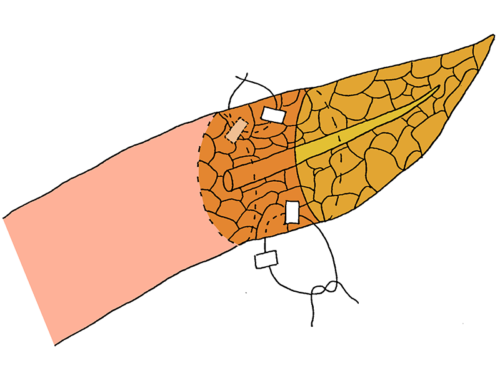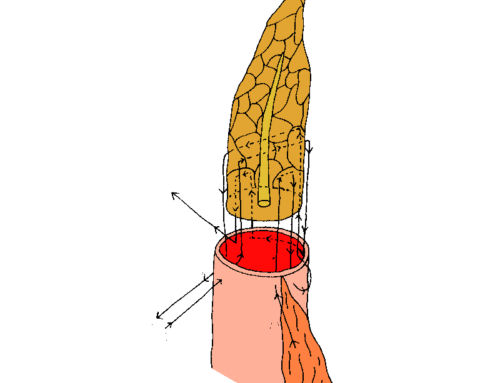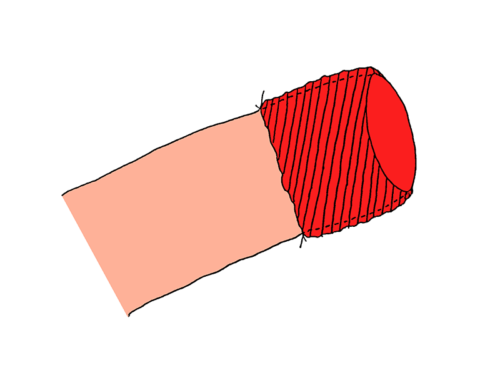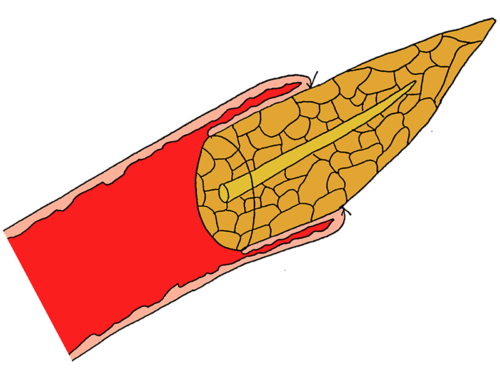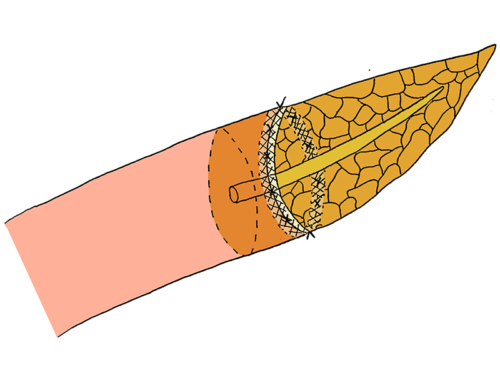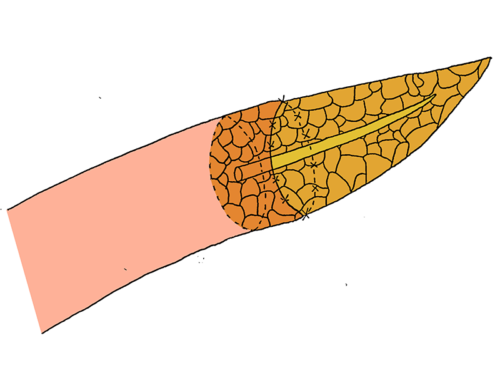The purse-string suturing-technique can be performed using a preloaded, reusable mechanical purse-string device, or can be hand-sewn, existing of a running suture. The purse-string is applied circumferentially to the cut end of the proximal jejunum.
One-layered invagination end-to-end pancreatojejunostomy using a purse-string suture
- The purse-string suturing-technique can be performed using a preloaded, reusable mechanical purse-string device, or can be hand-sewn, existing of a running suture.
- The purse-string is applied circumferentially to the cut end of the proximal jejunum.
- The pancreatic remnant is invaginated into the jejunal loop. This can be done using traction sutures.
- The purse-string is tightened snugly around the pancreatic stump. Additional sutures can be placed between the jejunual cut edge and the pancreatic capsule, incorporating the purse-string.
- Celis J, Berrospi F, Ruiz E, Payet E. Safe pancreaticojejunostomy after Whipple procedure: modified technique. J Surg Oncol. 2001;76:138-140.
- Murr MM, Nagorney DM. An end-to-end pancreaticojejunostomy using a mechanical purse-string device. Am J Surg. 1999;177:340-341.
- Nordback I, Raty S, Laukkarinen J, et al. A novel radiopaque biodegradable stent for pancreatobiliary applications–the first human phase I trial in the pancreas. Pancreatology. 2012;12:264-271.



